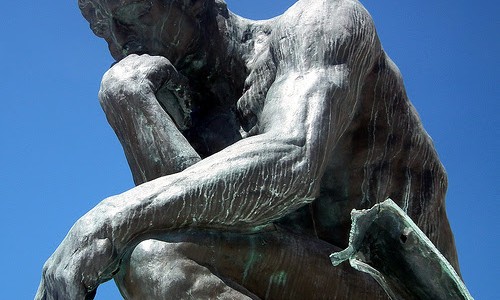What is the difference between a novice writer and an experienced writer? It’s not the ideas, talent or creativity: an inexperienced writer can have a great idea just as a pro can. Writing is a skill, not an inherent attribute.
In many ways, the difference can be boiled down to this: novices start writing at the first word of the introduction and continue to the last word of the conclusion. But proficient writers have started writing long before they put a sentence down and, more importantly, they continue writing long after.
In other words, experienced writers know that writing is not an act. Rather, writing is a multi-step process. What the novice writers think of as “writing,” proficient writers know to be neither more nor less than “drafting.”
Two ways to draft: the potter vs. the sculptor
There are two basic approaches to drafting, which are the inverse of each other. This is not to say that there are only two ways to draft – think of these as two ends of a spectrum. I’ll represent each extreme by means of an analogy to two types of artists:
1. The potter. This writer drafts early and often. The potter starts with a big, messy pile of clay and doesn’t hesitate to slap more material on the wheel in midstream. As the potter’s wheel whirls, the potter begins molding the material into a rough shape. He or she continues to shape the material, thinning a little here, adding a little there until he or she is happy with its design.
If at any time the potter feels as though his or her art isn’t working out, he or she can collapse it back into a clay ball and start again (or scrape the clay off the potter’s wheel and start with new clay.) If all goes well, however, after a little drying time the potter will ornament the piece with any of a host of glazes.
2. The sculptor. This writer drafts late; precision is the sculptor’s watchword. Since he or she works with stone, he or she plans each cut with painstaking care. After all, one misguided cut could ruin the piece.
Although it takes a long time to complete a sculpture, unlike the potter the sculptor already has an image of the finished product in his or her head. Each cut, from the broadest lines to the finest nuances, has been envisioned in advance. The sculptor works to actualize this vision. Once the vision has been actualized, the sculpture is complete; no need to dress it up with paint or glaze.
Strengths and weaknesses of the potter
The potter’s method is somewhat chaotic, but it is also relaxed. This writer knows that he or she can always revise the work later, so he or she doesn’t hesitate to spend time writing about ideas he or she isn’t sure of. By writing about them, the potter learns which ones blossom and which ones fizzle out. This writer may use the initial draft as a testing ground, a way to clarify reasoning in support of an idea by throwing it up against the wall to see what sticks, as they say.
However, if the potter isn’t careful, the resulting piece will be more unfocused, choppy, and sloppy than the sculptor’s. The potter’s blithe “I can just fix it later” attitude, when combined with the twin demons of distraction and procrastination, may lead to some ideas never getting the revision they deserve. It’s all fun and games when you’re throwing clay around, but without disciplined, intensive revision the potter’s ideas may not reach their potential.
Strengths and weaknesses of the sculptor
The sculptor, on the other hand, takes writing seriously. An expert researcher and planner, the sculptor does an immense amount of work before drafting occurs. Each point is outlined, and the sculptor’s citations are in place. In terms of content, this writer has worked to create a well-developed argument in the invention and planning stages.
When it comes to drafting, the sculptor does not waste words. Since the sculptor knows what he or she wants to say, the sculptor approaches the task of drafting as primarily a process of articulation, that is, finding the best way to say it. Thus, the sculptor may spend a lot of time staring at the computer screen (or piece of paper) going through a variety of expressions before choosing the most appropriate one. When the sculptor finishes a draft, it is close to where he or she wants the final product to be and the sculptor often proceeds straight to editing.
While planning is certainly key to a well-written piece, being reluctant to deviate from an outline may prevent the writer from capitalizing on ideas that may only present themselves when drafting. A sculptor may push those ideas aside because he or she does not want to ruin the outline it took so much time to create. The sculptor must also beware that he or she does not wait too long to start drafting. Since a sculptor depends on his or her outline, he or she may underestimate the time it takes to turn that detailed outline into detailed paragraphs.
Once you know which type you resemble, you can exploit your drafting strengths while avoiding pitfalls. So when you write, are you a potter or a sculptor?
Go back to the full list of Writing Power articles.
Photo courtesy of Erik Drost (via Flikr)

